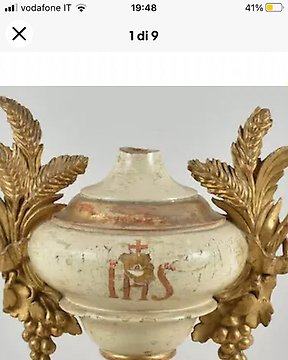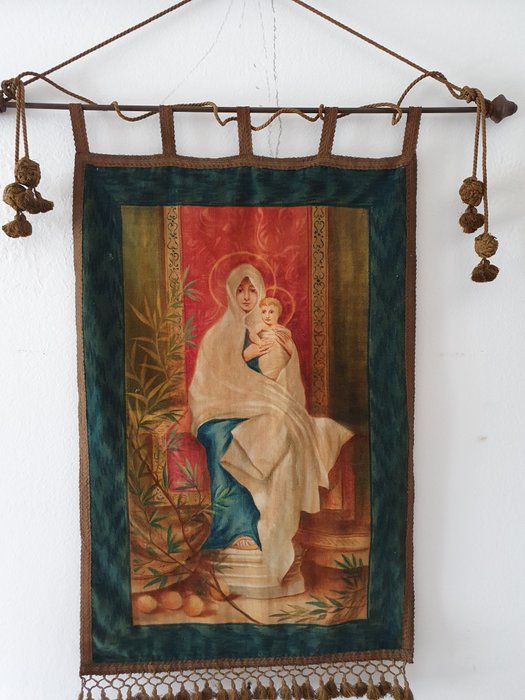
掌托 (1) - 木 - 19世紀末
編號 38522463

編號 38522463

Painting on fabric hand painted with grass juice technique depicting “Our Lady with Jesus Child” supported by a brass rod. Please see photos.
History and Technical Procedure of Grass Juice:
Colours are obtained from plant materials, unfortunately this method is almost entirely abandoned due to the practical difficulty of use. This technique, however, was popular over the 18th and 19th century, mainly in Japan for decorating cards, fans and high quality fabrics like rich people’s kimonos. The effect obtained with this technique lies in the subtlety of watercolours mixed with a good drafting and rendering of tempera.
In Europe, this technique saw a widespread use between the 17th, 18th and 19th centuries, for painting fabric upholstery by using vegetable colours 'imbibendo', i.e. by soaking the canvas with no previous plaster and glue preparations, as they used to do for oil and tempera paintings. The technique is somewhat reminiscent of Renaissance paintings, but the colour rendering shows somewhat different tones and a remarkable brilliance.
The rendering itself can be considered a mix between watercolour and lean tempera but, unlike the latter, the ‘succo d’erba’ technique does not provide a binding agent for pigments. In fact, it is merely vegetable colours diluted in water enriched with an alum solution which acts not just as a binder but as a fixative for lively and bright colours.
Artwork size:
height 92 cm,
width 52 cm.